
We had a great first impression of the Maltese islands when we passed the sheer cliffs of Gozo on our way to Valetta. They made us think of the white cliffs of Dover!

Being back in Schengen and the EU we had to check in with Customs and Immigration. This was accomplished in Grand Harbour. We docked alongside an old high dock wall and had to use a large tire to climb onto the dock; not the easiest of entries. Most of the officials were welcoming and friendly, apart from one. Back to the boat, out of GH to the inlet NW of GH to dock in Marina di Valletta, a new marina, where we berthed alongside, what luxury; but not quite as luxurious as Euphoria II (a 50m motor vessel built in Turkey, and recently sold for around €17.5 million) opposite us on the finger dock. Unfortunately, marina fees in Malta are high, so we planned to stay four nights, which should give us some time to explore and for our crew, Steve, to arrive from the UK. However, we ended up staying 7 nights while waiting for a good weather window.

Old Valletta has considerable history, many interesting buildings, fortifications, and way too many churches (1 for every 1,100 of the primarily RC population; abortion is reportedly illegal). The older buildings were usually constructed from limestone blocks, a plentiful local supply enabling a quick construction time, with many sculptured adornments. The new Malta started soon after it entered the EU in 2004. Construction of poured concrete buildings and high-rises is rampant, as is the associated urban sprawl. The locals we talked with do not like the change, higher cost of living, population explosion and density. Gozo is apparently like Malta was 20 years ago, a much more peaceful environment. Malta is an arid island with very limited agriculture. Potable water is generated from its 6 desalination plants.
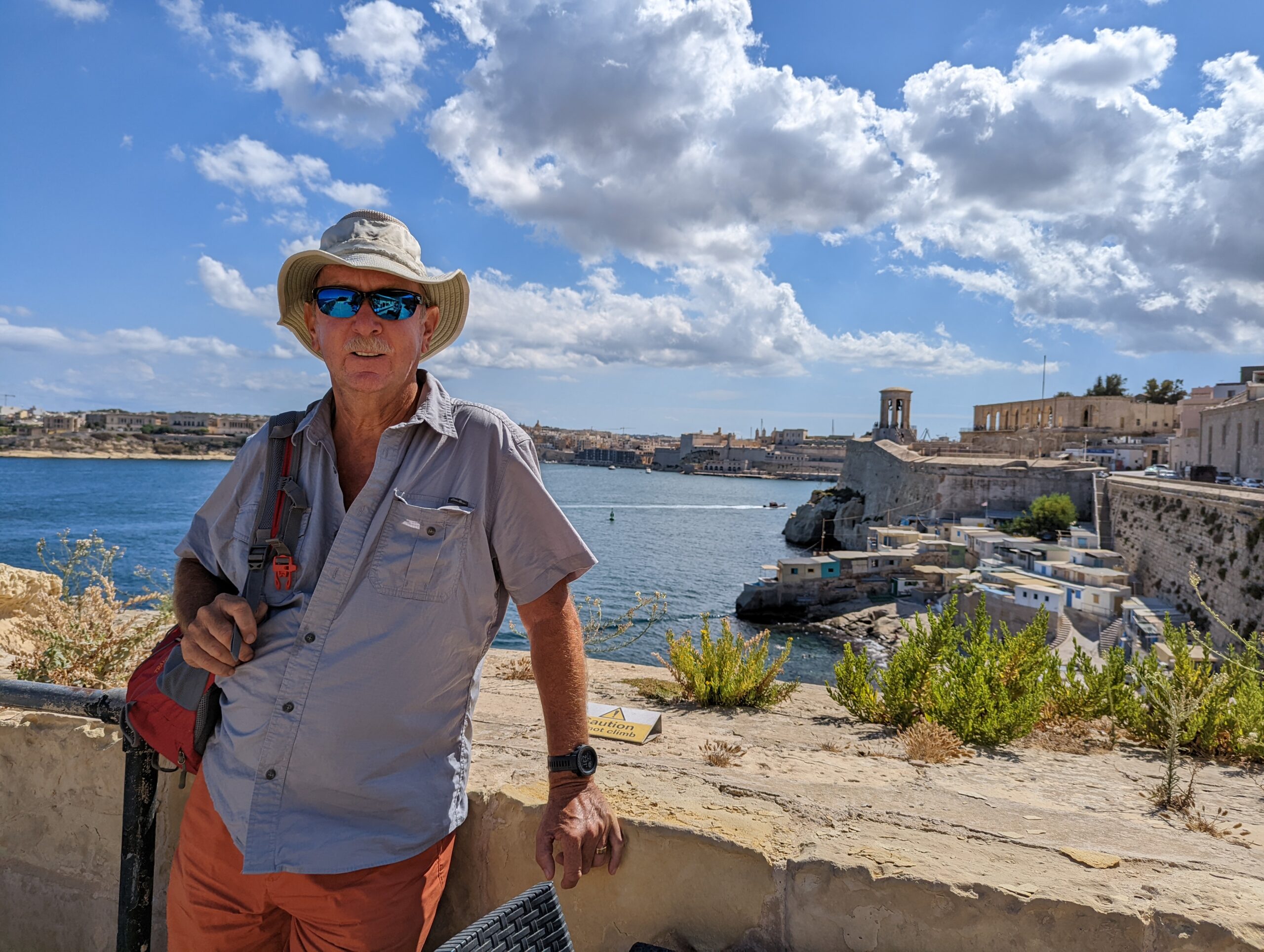
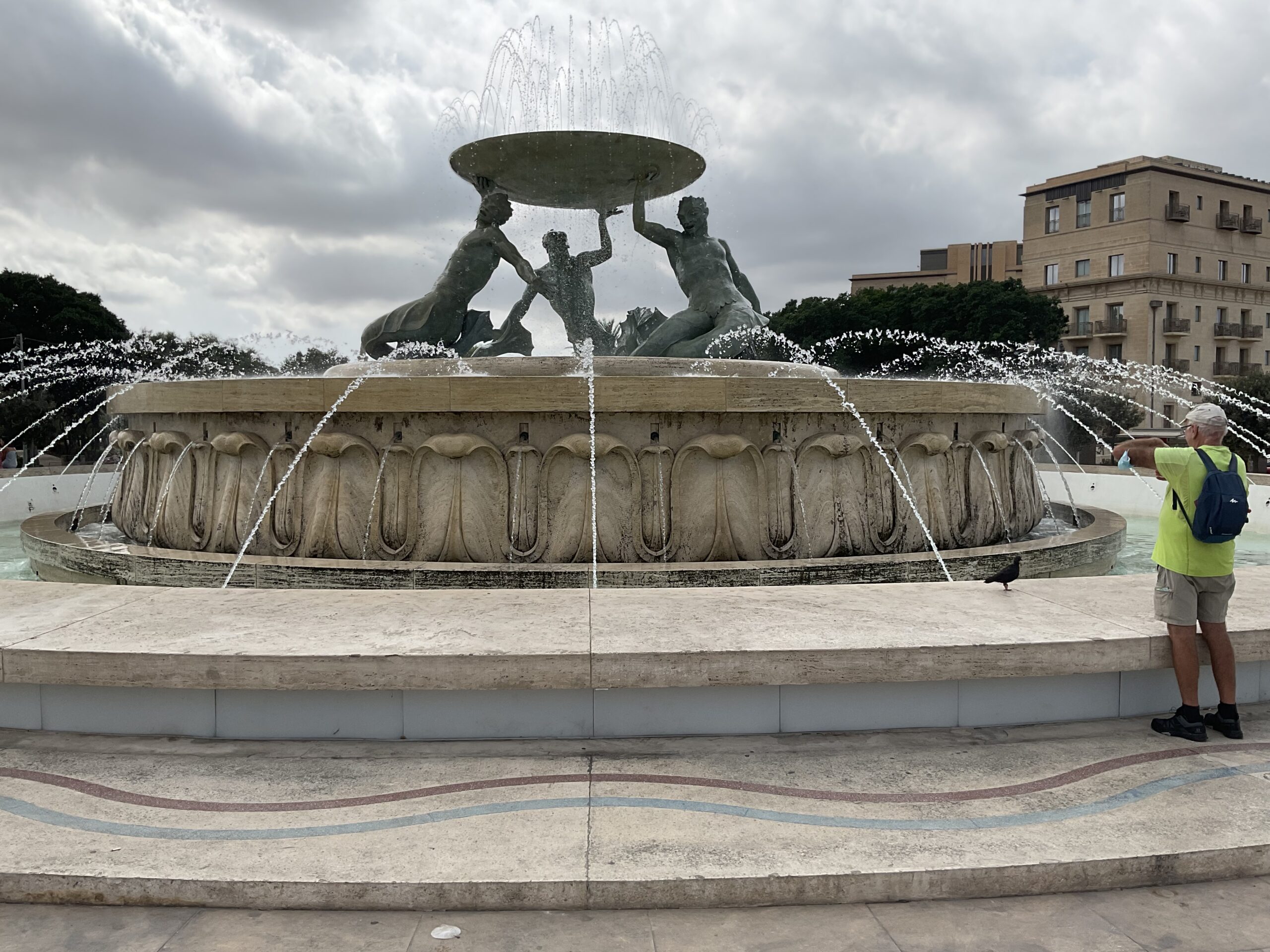

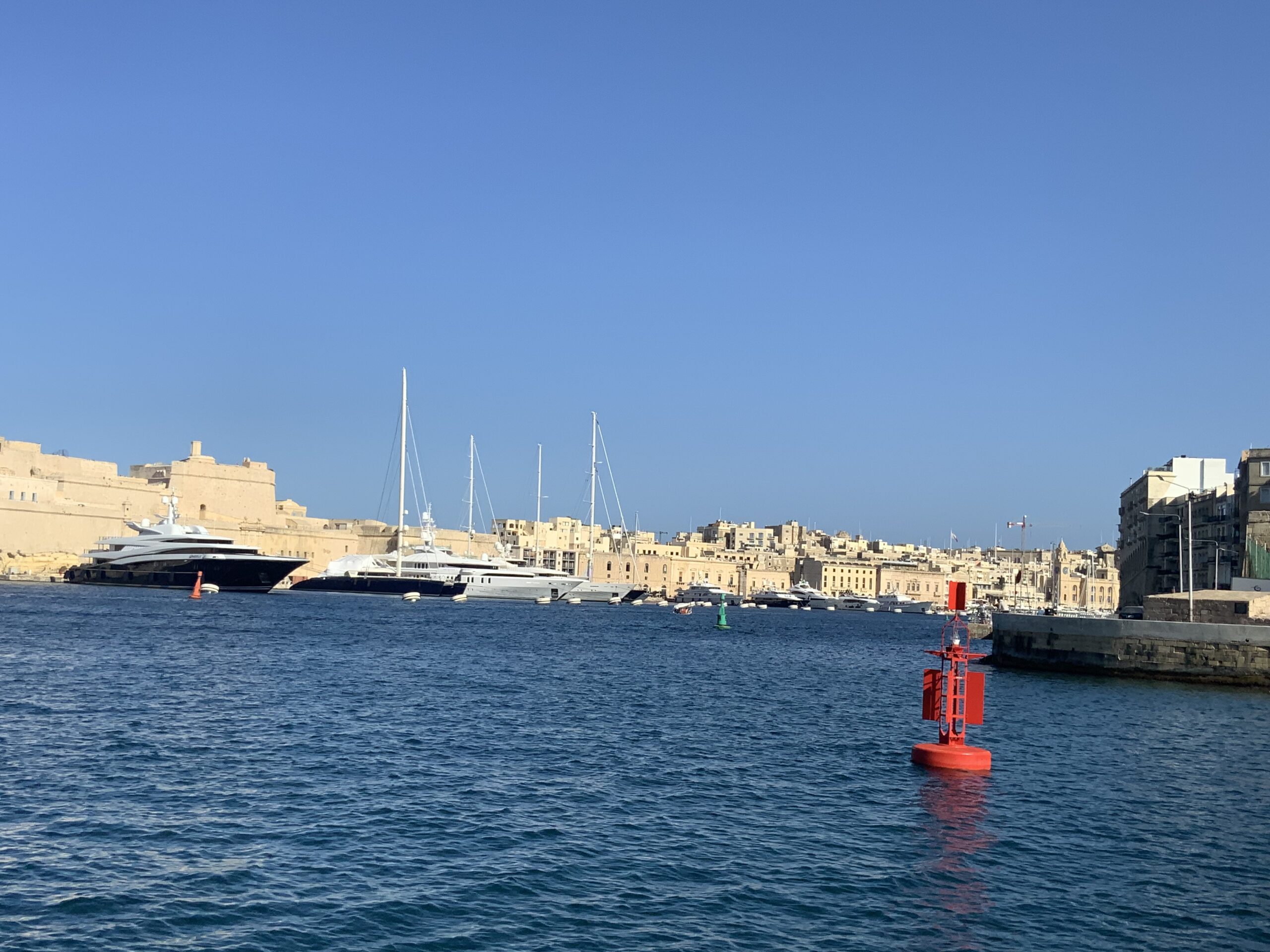
Malta lies about 50 miles south of Sicily and 176 m west of Tunisia. Its location in the center of the Mediterranean gave it coveted strategic importance to multiple naval powers. The first inhabitants arrived around 5900 BC, as evidenced by many megalithic ruins. The Phoenicians occupied it between 800 and 700 BC, followed by the Carthaginians and Romans (216 BC). Byzantines ruled the islands in the 4th to 9th centuries, and the Arabs from AD 790. Muslim rule was terminated in 1091 when the Normans conquered the islands, returning them to Christianity. In 1530 Charles V of Spain gave the islands in a perpetual lease (an annual single Maltese falcon) to the Order of the Knights of the Hospitalier of St John of Jerusalem, who had been driven out of Rhodes by the Ottomans in 1522. Napoleon took the islands in 1798, when en route to Egypt. However, the French were ousted by the British with the help of the locals who despised French governance after they ransacked the churches to help fund Napoleon’s war efforts. As part of the Treaty of Paris it became a British colony in 1814. On September 21, 1964 it became independent from Britain and a Republic on December 13, 1974. The 2022 Independence Day celebrations here were decidedly low key, no fireworks and minimal parades. The President went, as did Steve, to a classical music concert at an old theatre.
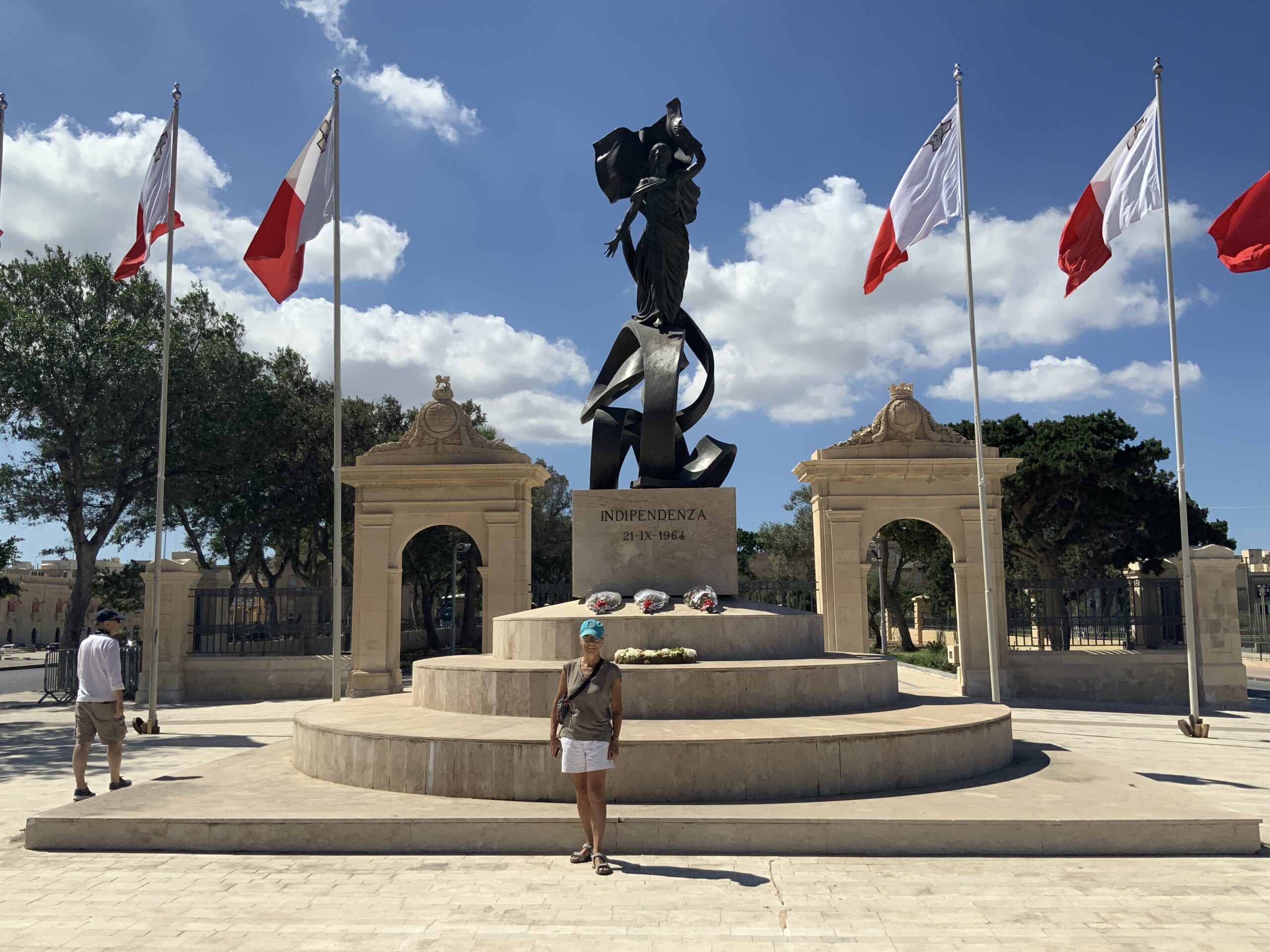
In World War 2 Malta was maintained by the British as a strategic base to attack Italy, fight the Axis countries in North Africa, and maintain shipping routes via the Suez canal. The island was heavily bombed by the Axis and almost ran out of food and other essential supplies. In August 1942, a convoy named Operation Pedestal was sent from Britain with supplies. Of the 14 cargo ships in the convoy only five arrived, following German and Italian aircraft bombing, submarine, mines, and E-boat attacks. Several Navy ships, including the aircraft carrier HMS Eagle, were also sunk. Over 500 Navy and other seamen were killed. The US oil tanker Ohio, with its British crew, was one of the few ships which survived. Although the cost was high, the convoy was viewed as a strategic victory, as Malta remained under British control. The bravery of the population during the Siege convinced King Edward VI to award Malta the first collective George Cross in 1942. The Cross is currently on the state flag and naval ensign (and our courtesy flag). The flag with the well known Maltese Cross can be found flying only from the stern of Maltese registered vessels.
Valletta was named after the the Frenchman Jean de Valette, Grand Master of the Knights of St. John in Malta, who defeated the Ottomans who had besieged the Grand Harbour area in 1565; about 9,000 knights and Maltese defeating 40,000 invaders. Following the siege the inner harbour and fortifications were extended, and watchtowers built along the coast.
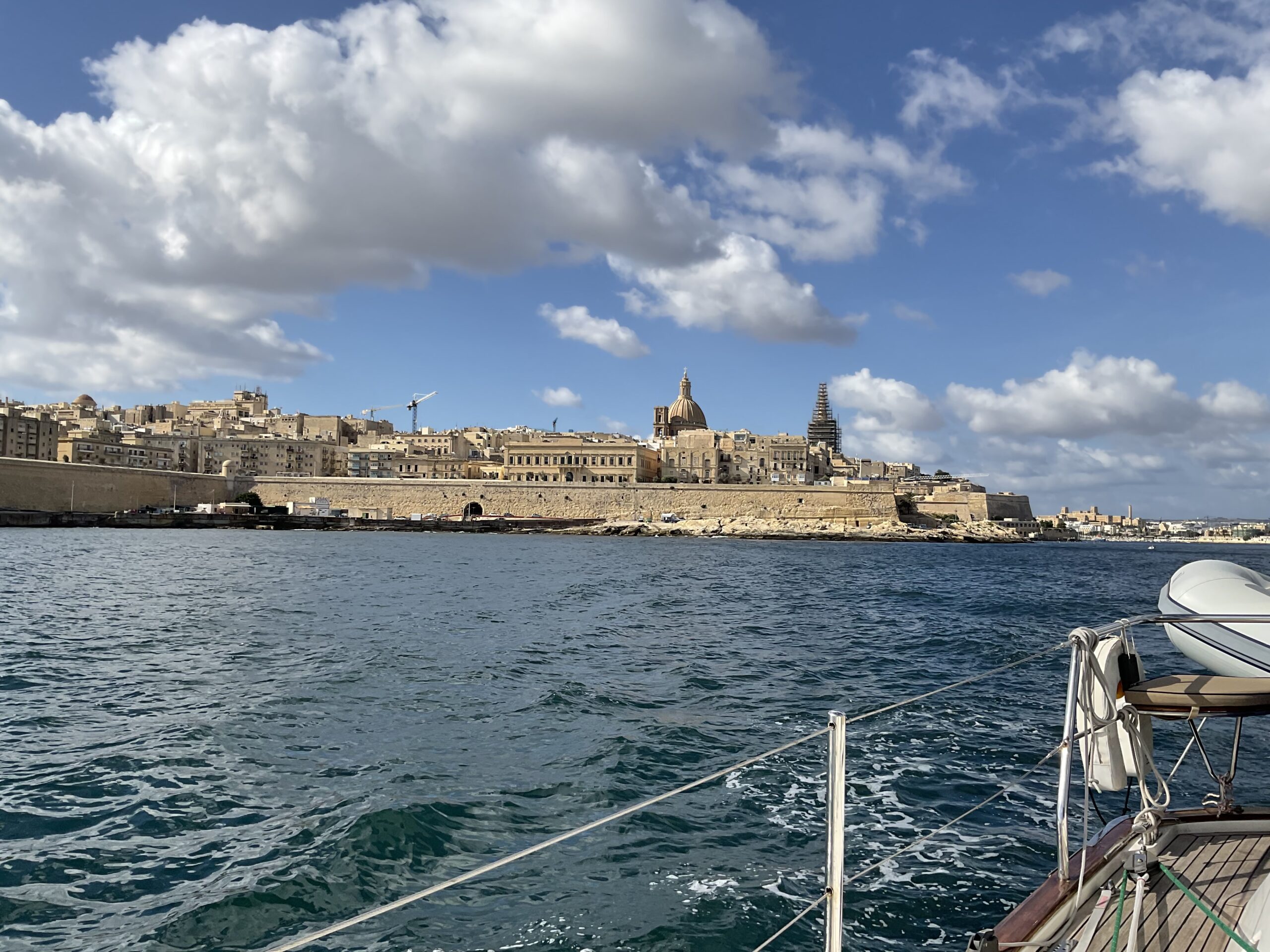
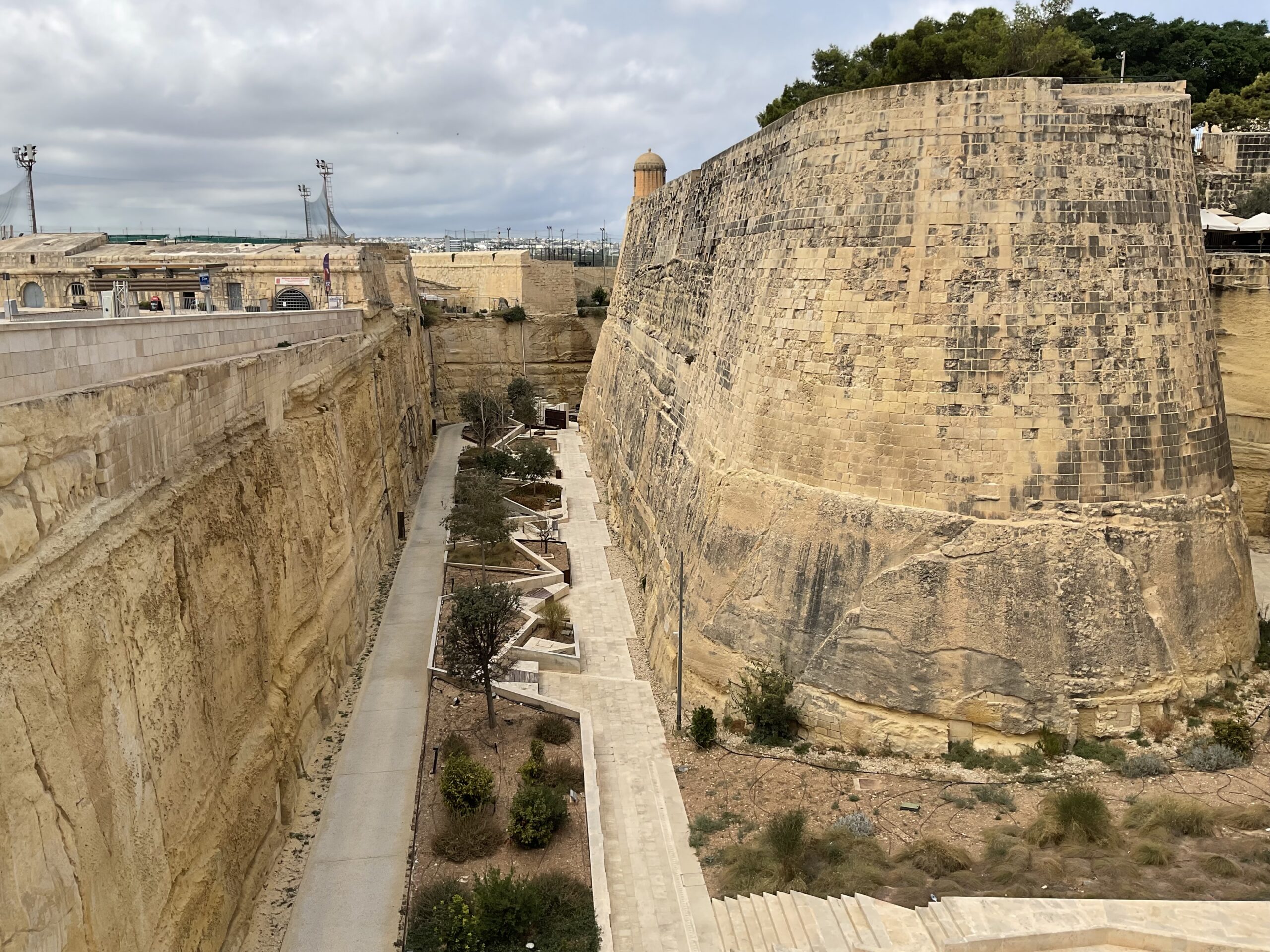
While in Malta we visited the archaeological and war museums, Rabat and Medina, Hope and Steve attended a Carravagio musical in what used to be the infirmary run by the Knights, St. Elmo’s fort, Gozo (Victoria and the Citadella), and several fine restaurants. Rabbit dishes are a speciality on the island. There are also some good local wines.

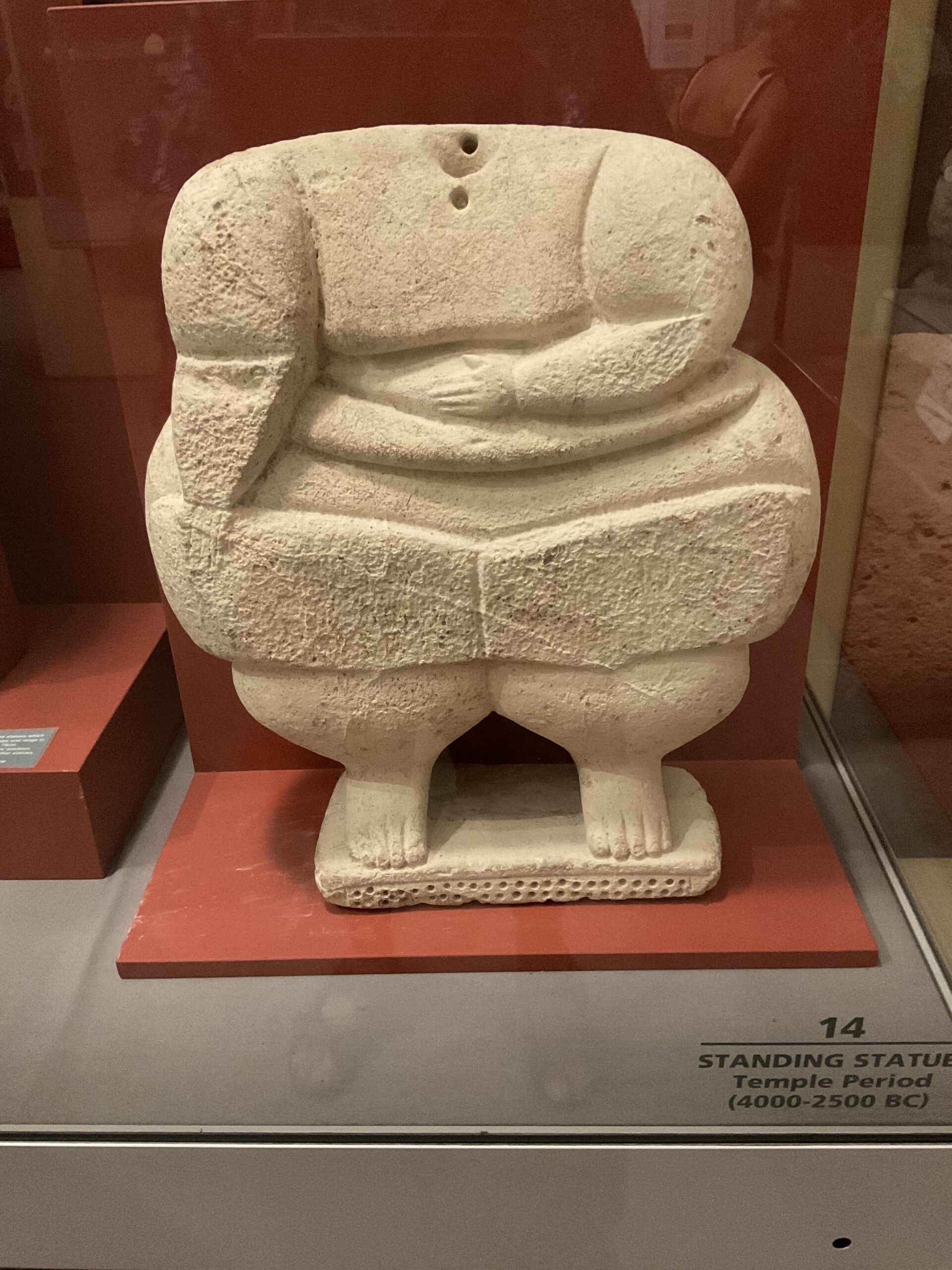
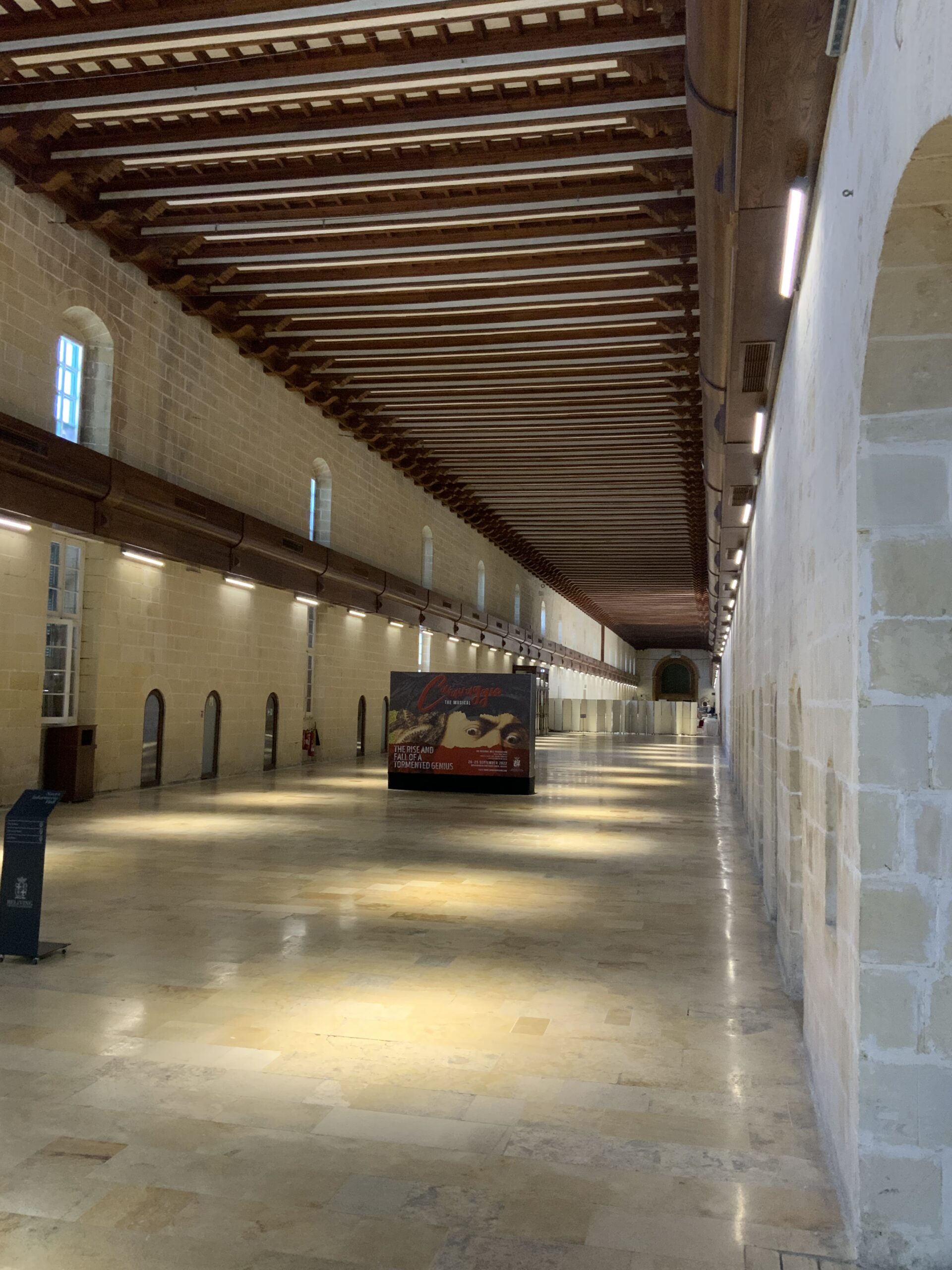



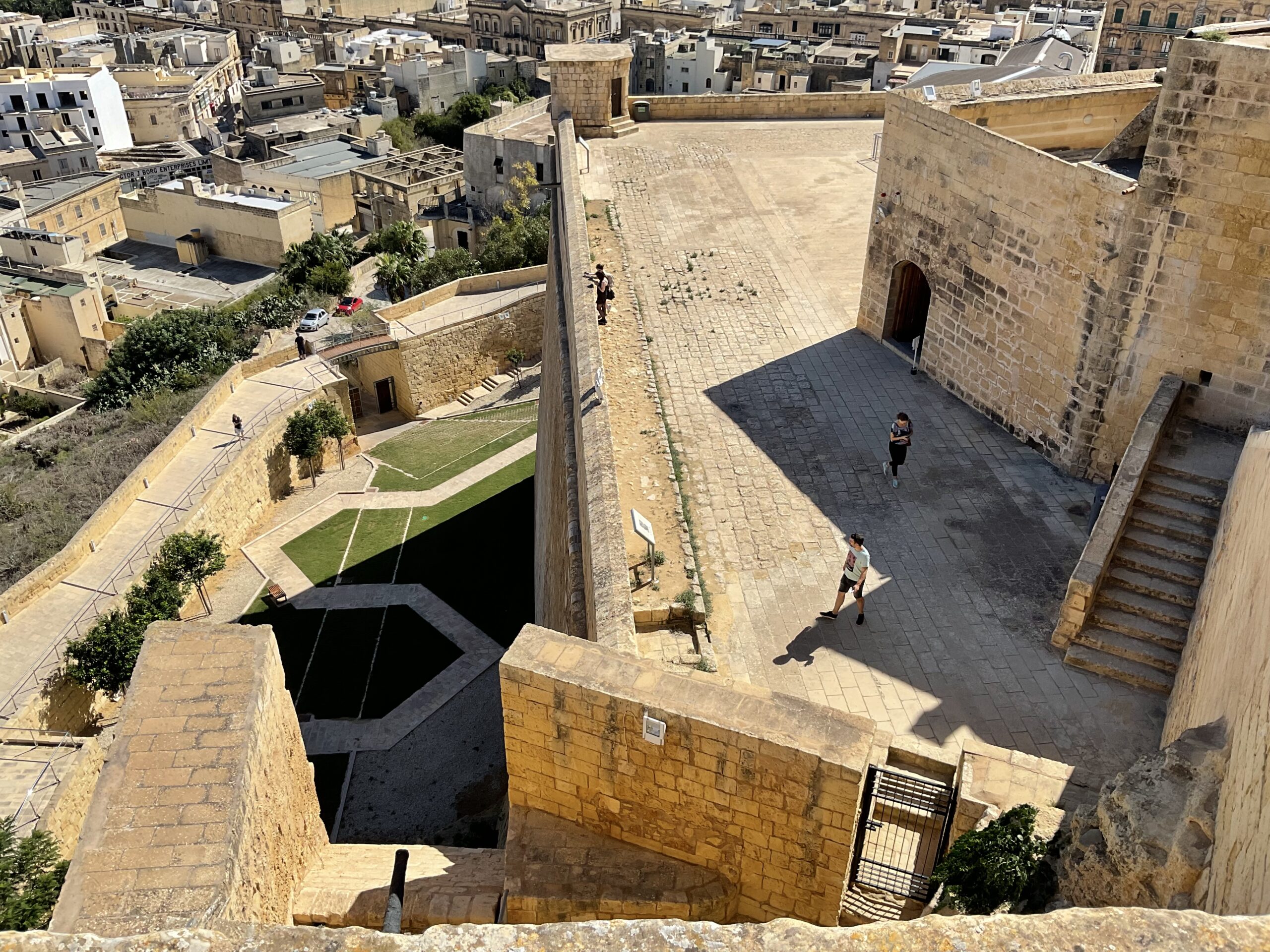
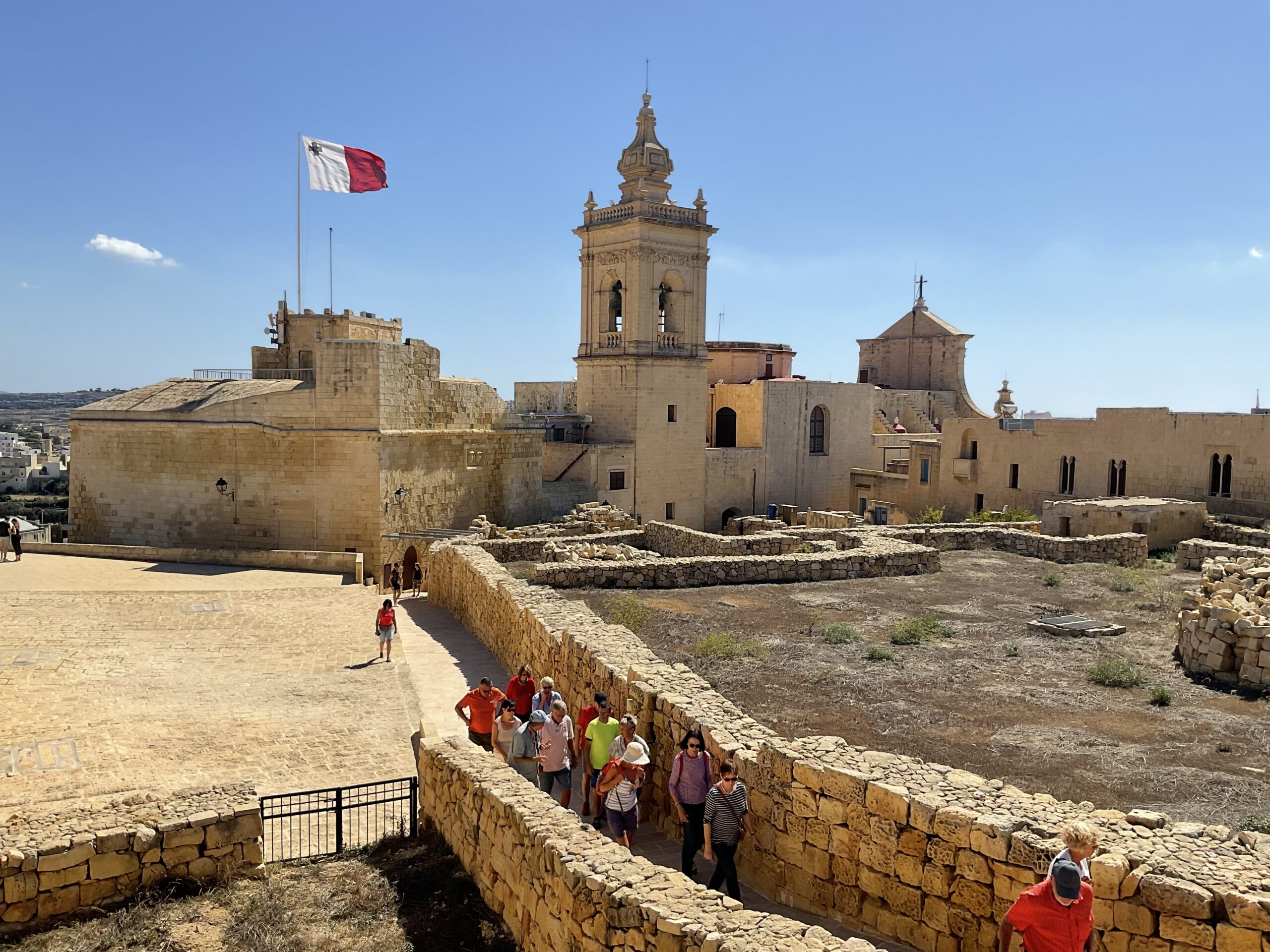

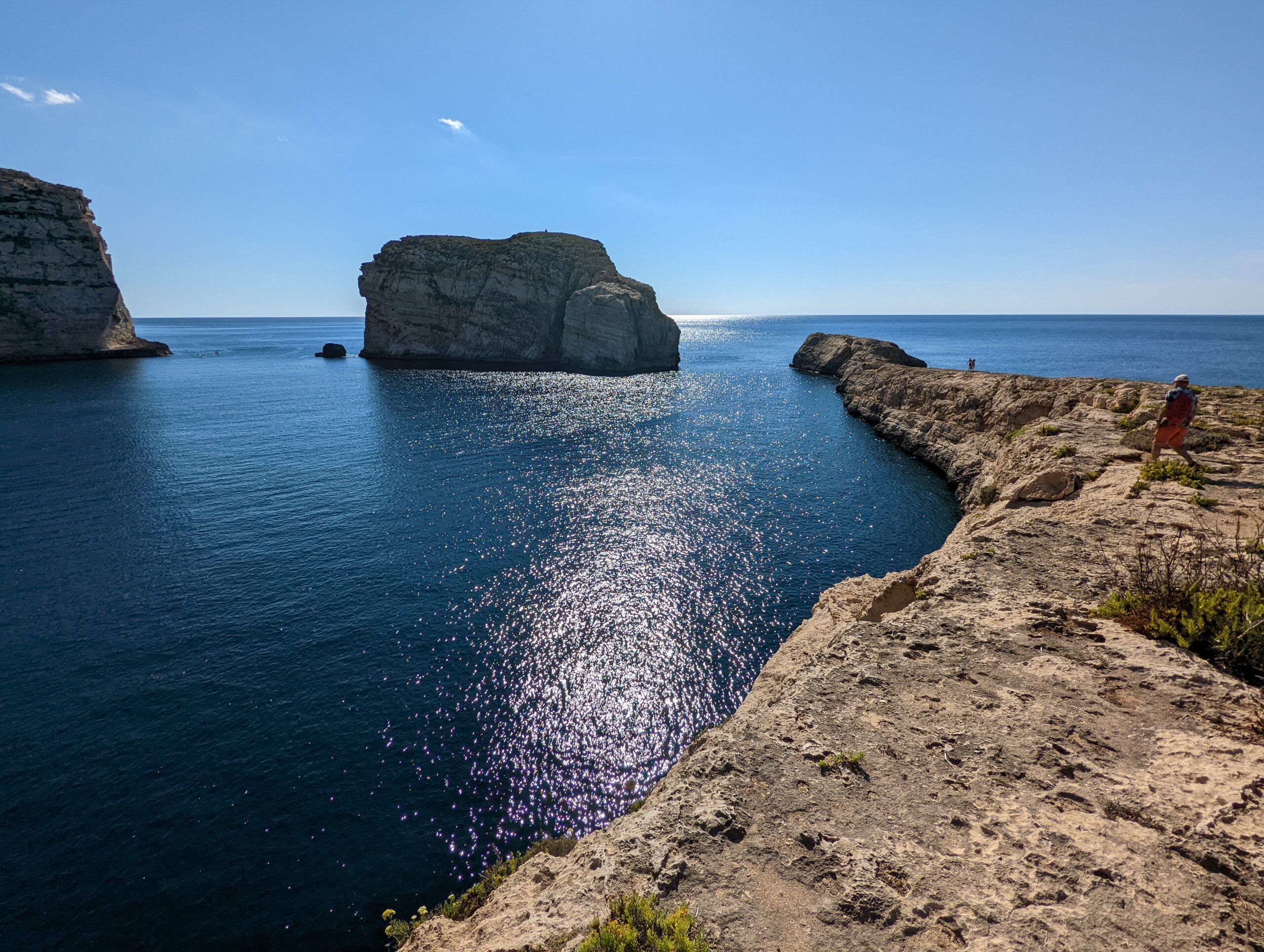
Next stop was to be Chania, in Crete, a three day sail. That was Plan A but we reverted to Plan B off Chania as we had a very fast easterly passage in winds from the south at 14-24 kts, with speeds often above 8 kts. Our average speed during 64 hours of sailing was 7.1 knots. We had our first real Lady M Med mooring experience in Iraklion where we dropped the anchor and reversed back to the harbour wall. Fortunately Steve was able to cajole the Port Authority into taking our lines as it would have been impossible to jump ashore with them ourselves.

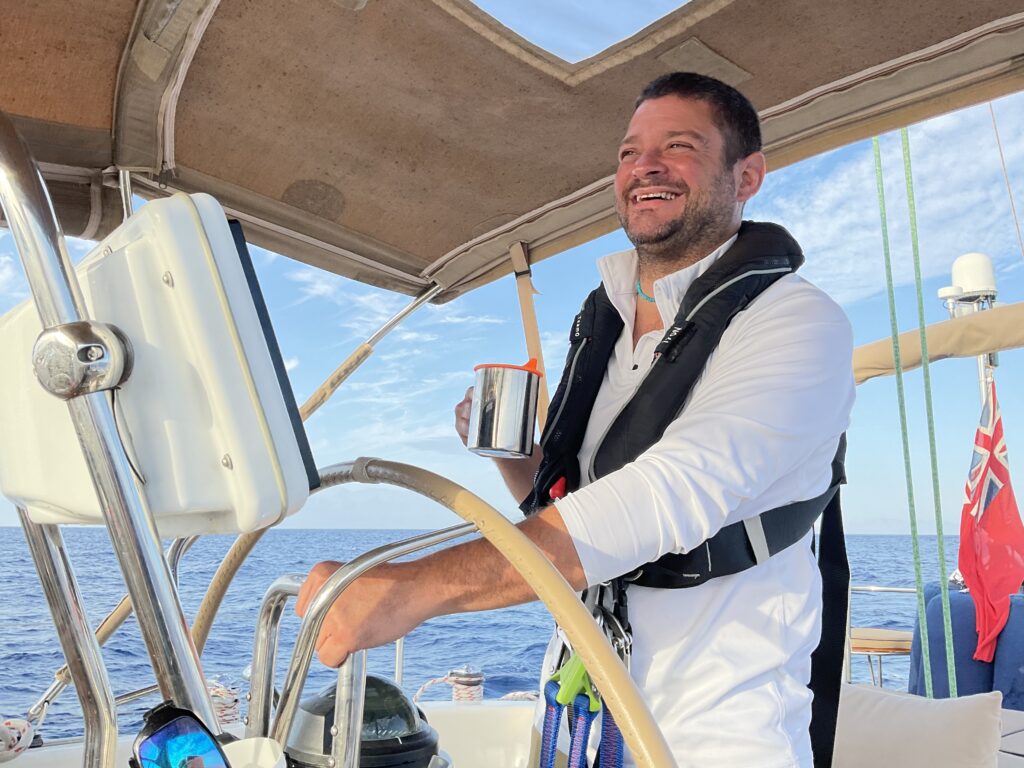
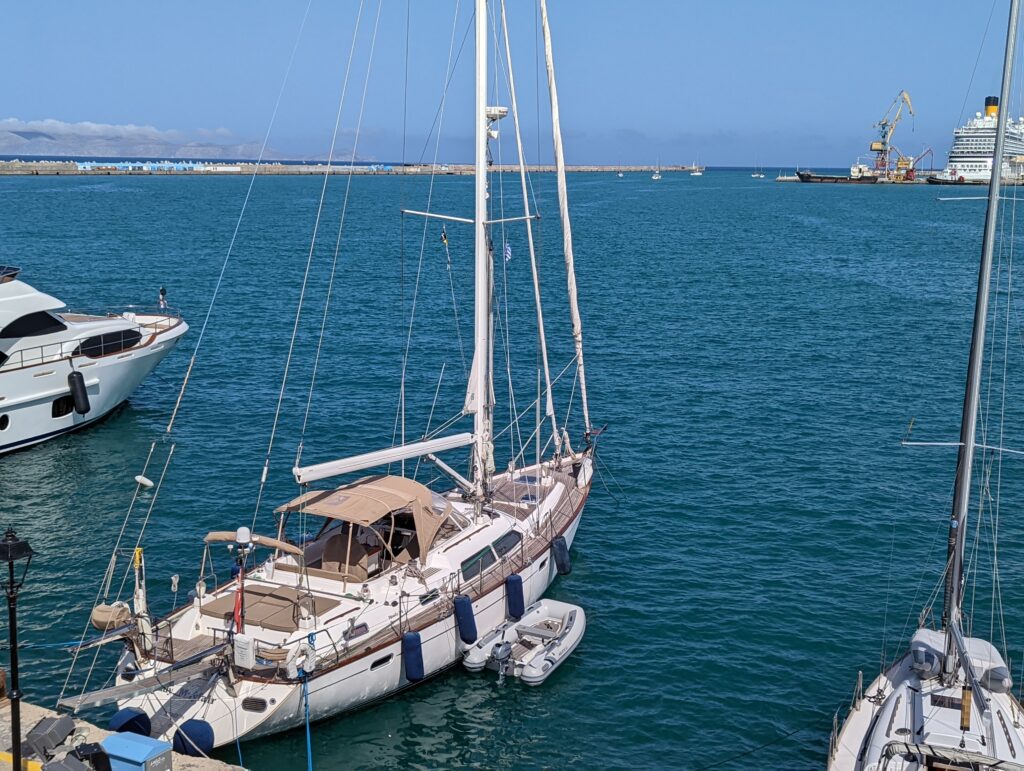
4 Comments
Cheryll
Many congratulations on reaching Crete and making up time to compensate for extra time in Malta. Can’t imagine mooring stern on without help, very very tricky. Ok for the motor boats. Hope you have a few days there to explore before going off to pastures new. We have lots of empty tankers off the Isle of Wight too.
Jim Bailey
Hope and Howard your blog is fantastic, I could pass history exams just by reading your blogs. I love your boat, it is the style that I would choose if I had the inclination to tour the world, although my preference is for a slab reefing mainsail. You seem to be enjoying yourselves, Tina and I have just had three weeks sailing in Turkey, I am dreading the time when we are too old to do it
jenny
Thanks H&H I am really enjoying your history tours of the Mediterranean. Gozo was the first place I saw pomegranates growing like colourful baubles (seen loads since!). Crete is on my list to visit, so I’ll look forward to the virtual guided tour. Enjoy!
Ruth Pearman
Terrific blog. Thank you for sharing so much of what you have learnt with us. Great to know you are on Crete now and hope you find time to explore before setting sail for Turkey. Bon voyage! Rx